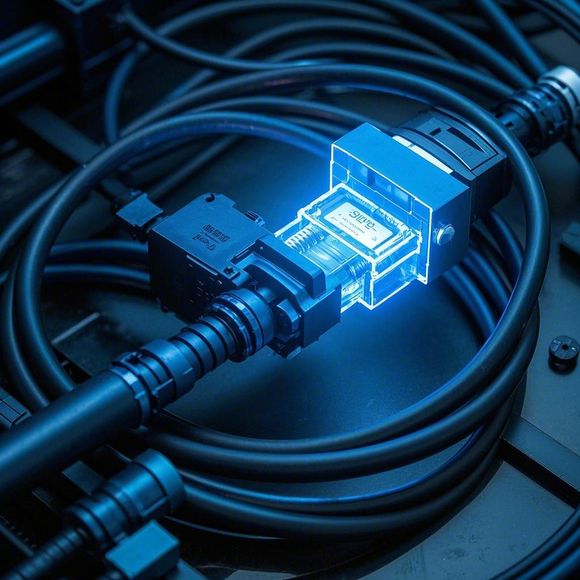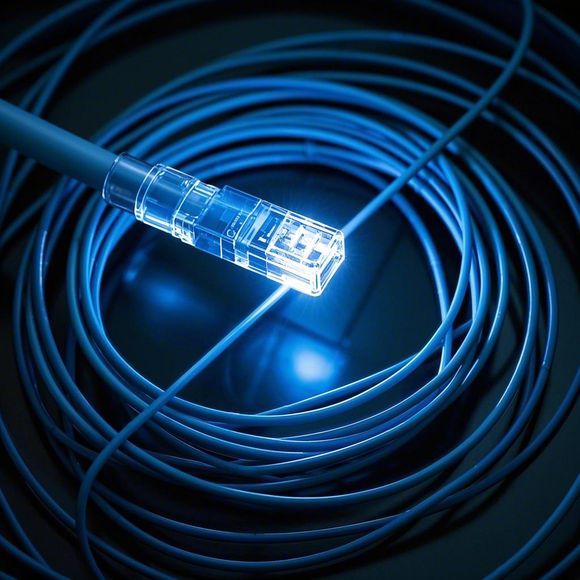Understanding and Implementing Communication Protocols for Security Devices
Communication protocols are the sets of rules that govern how devices exchange information over a network. For security devices like firewalls, intrusion detection systems, and VPNs, the protocols they use are critical for ensuring that data is transmitted securely and that the devices can work together seamlessly. In this article, we'll explore what communication protocols are, why they're important for security devices, and how to implement them effectively.Firstly, let's define what a communication protocol is. A protocol is a set of rules that govern the format, timing, and sequence of messages exchanged between devices. It defines how data should be packaged, sent, and received, as well as what to do if there's a problem. Communication protocols are essential for ensuring that devices can communicate with each other, regardless of the differences in their internal workings.Security devices use various protocols to perform their functions. For example, firewalls use protocols like TCP/IP to filter incoming and outgoing traffic, while intrusion detection systems use protocols like SNMP to monitor network traffic for signs of attack. VPNs rely on protocols like IPSec or SSL/TLS to encrypt data and ensure privacy.When implementing communication protocols for security devices, it's important to consider factors like compatibility, performance, and security. You need to ensure that the protocols you choose are compatible with the devices you're using and that they can handle the volume of traffic and the types of data you're working with. Security is also a critical consideration, as vulnerabilities in protocols can be exploited by hackers to gain unauthorized access to your network.To implement communication protocols effectively, follow these steps:1. **Understand Your Requirements**: Determine what protocols you need based on the functions you want your security devices to perform.2. **Choose the Right Protocols**: Select protocols that are secure, reliable, and compatible with your existing infrastructure.3. **Configure Devices**: Configure your security devices to use the chosen protocols according to your network's specifications.4. **Test and Monitor**: Test the protocols in a controlled environment to ensure they work as expected. Monitor them regularly to detect and address any issues.5. **Stay Updated**: Keep your protocols and devices updated with the latest security patches and versions to address any known vulnerabilities.By understanding and properly implementing communication protocols, you can ensure that your security devices are working together effectively to protect your network and data.
Content:

Hey there! Today, we're diving into the world of communication protocols for security devices. Now, I know what you're thinking – "Great, another technical topic to wrap my head around." But fear not, my friend! We're going to break it down in a way that's easy to understand, even if you're not a tech whiz.
So, what exactly is a communication protocol? Well, it's like the language that your security devices use to talk to each other and to the systems they're connected to. Just like you and I are having a conversation in English right now, your cameras, DVRs, and other gadgets have their own way of communicating.
Why is this important? Simple – without the right protocol, your security system is like a group of people speaking different languages. They can't share information, work together, or provide you with the data you need to keep your property safe.
There are tons of protocols out there, but we're going to focus on the most common ones in the security industry. First up, we have RS-485 and RS-232. These are older standards, but they're still kicking around in some systems. RS-485 is great for long-distance communication and can handle a lot of devices on the same network. RS-232, on the other hand, is more for short distances and isn't used as much these days.
Next, we have Ethernet and Wi-Fi, which are the bread and butter of modern security systems. Ethernet provides a fast, reliable connection, but it requires physical cables. Wi-Fi, on the other hand, is wireless and super convenient, but it can be less stable depending on your environment.
Then we have the big guns: IP protocols like TCP/IP and UDP. These are the backbone of the internet, and they're also used in security devices that connect to networks. TCP/IP is great for ensuring data arrives safely and in order, while UDP is faster but less reliable.
When you're setting up a security system, you need to consider the range, reliability, and bandwidth of the communication protocol. For example, if you have a large property and need cameras far away from your control center, you might opt for a protocol that can handle that distance. If you're in a crowded urban area with lots of interference, you'll want a protocol that can fight through that and keep your connection strong.
It's also important to think about compatibility. Make sure the protocol you choose is compatible with the devices you're using. For instance, if you have an old DVR that only speaks RS-485, you can't just hook it up to a network using Ethernet.
In conclusion, communication protocols are a vital part of any security system. They might not be the most exciting topic, but they're definitely one of the most important. Understanding how they work and which one is right for your setup can make the difference between a secure and an insecure environment. So, next time you're shopping for security devices or setting up a new system, pay attention to the protocol – it's the glue that holds it all together.
Content expansion reading:
"Secure Your Communication: A Guide to Compatible Security Devices and Their Protocols"
In today's digital world, the need for secure communication has become more crucial than ever. With the increasing number of devices connected to the internet, it is important to understand how they interact with each other and what protocols are in place to ensure that data remains safe and uncompromised. This guide aims to provide you with a comprehensive understanding of different security devices and their associated communication protocols, so you can choose the ones that best suit your needs and protect sensitive information.
1、Understanding Security Devices:
CCTV Cameras: These devices use video recording technology to capture footage of any activity within their designated areas. They come in various forms such as fixed cameras or wireless motion sensors which can be mounted on walls or ceilings. The most common type of CCTV is analog but advancements have led to the introduction of digital systems.
Access Control Systems: These systems control who enters specific locations by using keys or cards. Some examples include card readers, keypads, and biometric authentication methods like fingerprint scanning.
Surveillance Cameras: These cameras record video footage from a given area. They are often used for surveillance purposes, such as public spaces or high-traffic areas.
2、Choosing the Right Communication Protocols:
Modbus: This protocol is commonly used for industrial automation applications. It allows for easy integration of devices and provides a standardized way to communicate between them.
CoAP: This is another popular protocol that was designed specifically for low-cost, low-power devices. It offers simple communication mechanisms without the need for complex setups and configurations.
OPC UA: This is an open standards protocol that enables communication between devices over the network. It provides a flexible and scalable solution for real-time data exchange.
Zigbee: While primarily known for its low-power consumption, Zigbee can also be used for short-range communication. It's widely used in home automation and smart homes applications.

LoRaWAN: This protocol was developed to overcome the limitations of traditional wireless technologies. It offers long-range communication with low power consumption, making it suitable for outdoor applications such as remote monitoring.
NB-IoT: This is a newer protocol that utilizes Narrowband Internet of Things (NB-IoT) technology. It provides connectivity for low-end devices, allowing them to send and receive large amounts of data without consuming too much power.
3、Setting Up Secure Networks:
- Use firewalls and intrusion prevention systems to protect your network from external threats.
- Encryption should be used to secure all data transmitted over networks, especially sensitive information like financial transactions or personal data.
- Regularly update your devices' software and firmware to keep them secure and up-to-date.
- Consider implementing multi-factor authentication (MFA) for added security measures.
- Monitor your network traffic regularly to detect any suspicious activity or potential breaches.
4、Staying Updated:
- Keep up to date with the latest trends and developments in cybersecurity by attending training sessions, reading industry publications, or following reputable sources.
- Stay informed about the latest vulnerabilities and risks that exist in various security devices and platforms.
- Be aware of the latest hacking techniques and strategies used by malicious actors to gain access to your network or data.
5、Testing and Maintenance:
- Conduct regular tests to ensure that communication between devices is working correctly and that there are no issues with signal strength or connectivity.
- Regular maintenance of equipment and software updates will help ensure that security protocols remain effective and up-to-date.
- Regularly review your security policies and procedures to ensure they are aligned with current best practices and industry standards.
6、Conclusion:
- By understanding the various types of security devices and their associated communication protocols, you can select the ones that best suit your needs and protect sensitive information.
- Regular testing, monitoring, and maintenance are essential in keeping your network secure and up-to-date.
- Remember that staying up-to-date with the latest trends and developments in cybersecurity is crucial in ensuring the safety of both your devices and data.
Articles related to the knowledge points of this article:
Title: Communication and Power Cable Laying: A Comprehensive Guide
Title: Custom-Made Communication Cable Connectors
Title: Understanding the Prices of Baoding Low-voltage Communication Cables in China
Uniaxial Communication Cable: Properties, Uses, and Challenges
Where to Purchase Communications Cables: A Comprehensive Guide